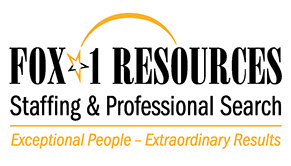Making LinkedIn Work for You
Tips for getting noticed and getting connected
With roughly one new member joining per second, LinkedIn has rapidly developed into a global professional networking superpower. But with so many people competing for attention on the site, it's easy to get lost in the crowd.
Here are a few quick tips to help you get noticed (in the right way) and get connected to potential employers:
Include a professional-looking picture. Even if you believe you're not the most photogenic person in the world, you should still include a profile picture. Why? It shows that you're comfortable with yourself, and it makes your profile a lot more personable. Like it or not, your picture is one of the first things people (read: potential employers) notice on your page. So, make a good first impression by uploading a headshot with adequate lighting and a fairly neutral background.
Maximize your professional headline. Your professional headline is a piece of prime real estate on your profile. If you just enter a job title here, you're missing an important opportunity to market and distinguish yourself. Write something catchy and specific to show others who you are (e.g., instead of "Project Manager for XYZ Company," try "I manage complex projects involving IT and marketing.")
Note: If you're in between jobs, it's okay to lay your cards on the table (e.g., experienced administrative professional looking for my next role in the Chicago area). Or, if you prefer, you can leave your employment status out of your headline and simply focus on the competent professional you are. Either way, think of the professional headline as a ten second pitch to sell your abilities to a potential employer.
Create a vanity URL. Most LinkedIn profile URLs contain a bunch of ugly code and numbers with a slash and then your name at the end. If you have a common name, or want to use the URL on a business card, stand-out from the crowd by customizing your LinkedIn URL. Just go to the "public profile" section to create a more concise and self-explanatory locator.
Consider upgrading to a premium account. LinkedIn now offers paid accounts that help job seekers reach out to hiring decision makers and manage their job searches more effectively. For a monthly fee, you are moved to the top of the hiring manager's list as a "featured applicant" when you apply to jobs on LinkedIn. Your listing is highlighted and displayed in a more eye-catching way, showing hiring managers that you've invested extra time and money to make your job search successful. The paid account also allows you to send emails directly to hiring managers' accounts, without waiting for an introduction from one of your contacts.
Leverage the new "network activity" section. LinkedIn recently expanded the functionality of the old "network updates" section. It now supports posting links that include images and article excerpts. So if you find an industry article that your LinkedIn connections (or potential employers) might find interesting, post it here. Posting links to timely, relevant information demonstrates that you stay on top of news and trends affecting your industry.
Adopt a smart connection strategy. LinkedIn connections are a reflection of you professionally--so choose them carefully. If you feel the need to decline a connection, it's polite to explain why. Likewise, it's good form to customize your invitation when sending a request for a connection (as opposed to the canned "I'd like to add you as a connection."). Finally, make your connection list public. If you don't, you essentially defeat the purpose of LinkedIn. Unless showing connections undermines your company's competitive advantage, you should display your contacts and encourage them to connect with one another.
Take advantage of new real-time profile matches. LinkedIn recently added a free beta feature, allowing hiring managers to search profiles that best match their job descriptions. If you're looking for a new job, there are two things you can do to ensure that your profile appears as an appropriate job match. First, be sure that your profile is up to date and complete (i.e., fill out the experience, summary and professional headline sections, and include comprehensive details about your past and present work positions). Second, utilize the "status update feature," which can alert your network that you're job searching and inform a job poster that you're an available candidate.
Garner a variety of recommendations. LinkedIn's "recommendations" give readers a third-party perspective on you and your work. If possible, include recommendations from a variety of sources--managers, co-workers, subordinates, satisfied clients--to give a "360 degree" view of you as a professional. In all cases, recommendations should come from people who know you well and can really speak to your competencies.
Make your summary SEO friendly. An employer's ability to find you depends on LinkedIn's search engine linking your name to certain search keywords. As a result, the "summary" section of your profile should contain keywords relevant to your preferred line of work. You have 2,000 characters to use in this section, so make the text work double-duty. Balance your SEO goals (the need to be found by search engines) with "readability" goals (the need to be understood by real human beings). As a general rule, "problem/action/results" stories that demonstrate your problem-solving ability work well to achieve both ends.
Sources used to write this article:
Lynch, C.G. (3 December 2008) LinkedIn Etiquette: Five Dos and Don'ts. CIO.com.
Lynch, C.G. (13 May 2009) LinkedIn Profiles: Avoid the Six Most Common Mistakes. CIO.com.
Lynch, C.G. (20 May 2009) Social Networking Etiquette: How to Introduce Yourself and Others Politely. CIO.com.
651-894-3990 ph | 651-894-0016 fax | Contact Fox-1 Companies | 1618 Cliff Road E, Burnsville, MN 55337 | Copyright © 2013 Fox-1 Companies

